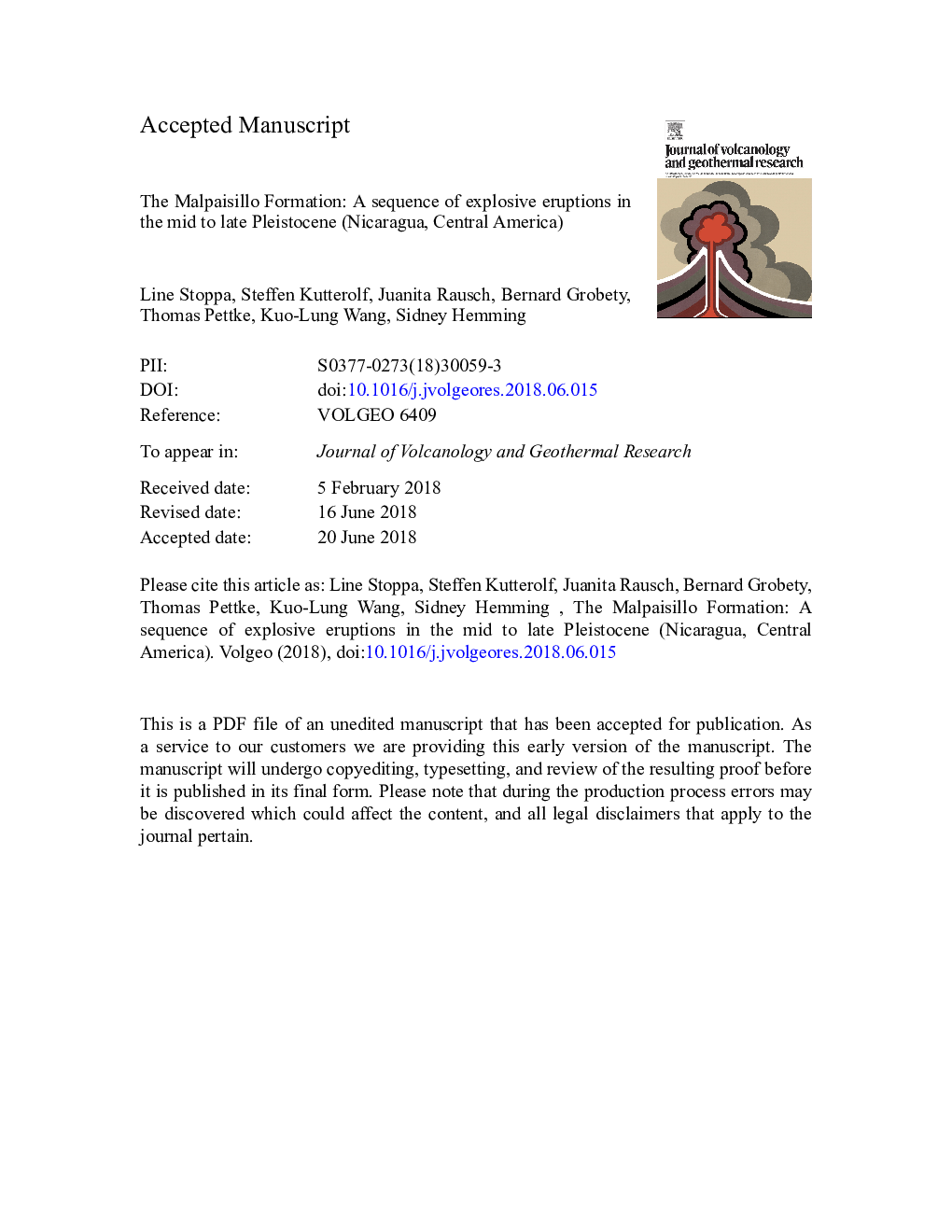| Article ID | Journal | Published Year | Pages | File Type |
|---|---|---|---|---|
| 8911240 | Journal of Volcanology and Geothermal Research | 2018 | 59 Pages |
Abstract
The 11â¯km-wide Malpaisillo Caldera and ~3.5â¯km-wide Monte Galán Caldera, located ~50â¯km northwest of Managua, are surrounded by tens of meters of rhyolitic tephras. These pyroclastic flow and fall deposits extend proximally at least 11â¯km to the southeast and 23â¯km to the southwest, with observed depositional thicknesses of >16â¯m for a single ignimbrite unit (or >25â¯m for the entire section). Distal deposits are found as far as 350â¯km offshore in the Pacific. At least twelve highly explosive large-volume eruptive phases with corresponding tephra deposits (LPTâ¯=â¯La Paz Centro Tephra, PPTâ¯=â¯Punta de Plancha Tephra, LCbTâ¯=â¯Lower Chibola Tephra, GTâ¯=â¯Guacucal Tephra, UCbTâ¯=â¯Upper Chibola Tephra, FeTâ¯=â¯La Fuente Tephra, STâ¯=â¯Sabanettas Tephra, MgTâ¯=â¯Miralago Tephra, ToTâ¯=â¯Tolapa Tephra, LMT, MMT, UMTâ¯=â¯Lower, Middle, and Upper Maderas Negras Tephras) are distinguished based on geochemical correlations and similar depositional characteristics. Radiometric 40Ar/39Ar ages indicate that most activity related to the large Malpaisillo Caldera occurred between ~570 and ~420â¯ka. The large Pleistocene Malpaisillo and Monte Galán Calderas are characterized by a long-lived history and, if evolved, a distinctly alkaline (K2Oâ¯=â¯2.3-3.8â¯wt%; Na2Oâ¯=â¯4.0-4.9â¯wt%) geochemical signature compared to the other Nicaraguan tephra deposits. As a result, the previously defined Malpaisillo Formation has been considerably extended and revised. Our findings contribute to fill a considerable gap in the long-term eruptive history of Nicaraguan volcanoes, with prominent implications for volcanic hazard evaluation for Nicaragua.
Related Topics
Physical Sciences and Engineering
Earth and Planetary Sciences
Geochemistry and Petrology
Authors
Line Stoppa, Steffen Kutterolf, Juanita Rausch, Bernard Grobety, Thomas Pettke, Kuo-Lung Wang, Sidney Hemming,
